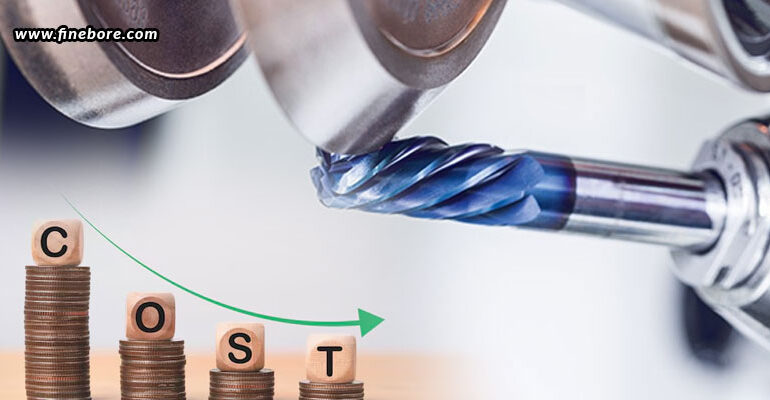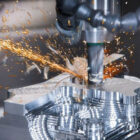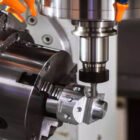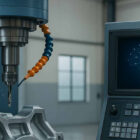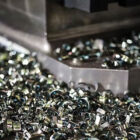In our earlier post, we spoke about the lifecycle of a boring tool, from manufacturing to reconditioning, but what exactly is reconditioning, and is it worth it? In this blog, we will discuss the process of reconditioning boring tools. This frequently overlooked practice can reduce operational expenses by as much as 40% while maintaining performance levels. We will delve into the mechanics of reconditioning, its advantages, and how it can help reduce costs.
Understanding tool reconditioning – What it involves
Tool reconditioning refers to the process of revitalizing used or worn cutting tools to meet their original specifications or come as close as possible. In the case of boring tools, this generally includes:
- Edge re-sharpening, which involves precision grinding techniques to restore the cutting-edge geometry
- Re-coating, where new coatings are applied to enhance wear resistance and thermal performance
- Balancing and re-profiling, which ensures the tool is symmetrical, balanced, and properly aligned to reduce vibration and enhance accuracy
- Quality inspection, which entails post-processing evaluations using CMMs or optical comparators to confirm tolerances.
Effective reconditioning can extend the tool’s lifespan by 70% to 95%, depending on the material and application of the tool.
How reconditioning saves up to 40% costs
- Prolonged tool longevity
Reconditioned tools can be utilized multiple times, significantly enhancing their lifespan. This practice minimizes the need for frequent tool purchases and reduces capital expenditures.
- Inventory efficiency
Through effective reconditioning, manufacturers can lower their safety stock of new tools, confident that used tools can be reliably restored. This approach decreases overhead costs and storage needs.
- Reduced machine downtime
Worn tools can result in subpar finishes, rejected components, or even damage to machinery. Re-sharpened tools restore cutting efficiency and minimize unexpected downtime.
- Decreased cost per tool
New boring tools, particularly those with specialized coatings or custom designs, can be costly. Reconditioning typically costs 30% to 60% less than acquiring a new tool. When applied to an entire tool inventory, these savings become significant.
- Enhanced ROI on coated tools
High-performance coatings such as AlTiN or DLC are pricey. Reconditioning enables the reapplication of these coatings without the need to replace the entire tool, thus maximizing the value of the initial investment.
Limitations involved
Although reconditioning can provide significant benefits, it may not always be the most suitable option. Tools that exhibit extensive chipping, cracks, or broken shanks are frequently irreparable. Furthermore, after several reconditioning processes, the tool’s geometry might deteriorate to a level that affects accuracy. In the case of intricate tools, the expenses associated with setup for precision grinding and re-coating can be considerable, making it essential to thoroughly assess the potential return on investment before moving forward.
When should you recondition a boring tool?
The effectiveness of reconditioning is largely influenced by timing; delay too long, and the tool may become irreparable. Important indicators that re-sharpening is necessary include a deterioration in surface finish quality, a rise in cutting temperature or vibration, increased tool wear, and a significant reduction in tool life relative to standard cycle counts. By proactively reconditioning boring tools after a set number of cycles, rather than waiting for obvious failure, consistent performance is maintained, tool usability is prolonged, and the chances of a successful recovery are enhanced.
How to set up a reconditioning program
Successful reconditioning begins with effective management strategies. Start by monitoring tool usage through methods such as barcoding, RFID, or CNC machine logs that capture cutting durations. Create standardized reconditioning cycles customized for each tool based on operational data and part specifications. Choosing the right partner is essential—collaborate with certified reconditioning specialists who are knowledgeable about the intricacies of boring tool geometry, coatings, and performance criteria. After reconditioning, always verify tools with precision instruments like profile projectors or micrometres to confirm they adhere to dimensional and functional standards. Lastly, compare the performance of reconditioned tools to new ones by evaluating critical metrics such as surface finish, tool longevity, and overall machining efficiency.
In the current competitive manufacturing environment, achieving cost savings while maintaining quality is essential. Reconditioning boring tools serves as a practical and quantifiable method to reach this goal. For machine shops operating on narrow profit margins or larger facilities looking to scale effectively, tool reconditioning is a strategic necessity rather than merely a maintenance activity. Acknowledging this increasing demand, FineTech Toolings not only supplies high-performance boring tools, but also promotes intelligent tooling lifecycle management. So, if you are in search of reliable boring tools suppliers in Bangalore, or wish to investigate cost-efficient reconditioning programs, FineTech Toolings offers more than just tools; it provides enduring value.

